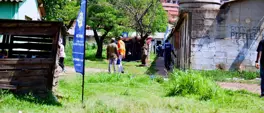Public Protector finds foul play in construction of Tembisa’s R82m Mayibuye Primary School
Thabiso Goba
3 July 2024 | 4:51The Office of the Public Protector said the school was built near a wetland without the necessary environmental authorisation.
JOHANNESBURG - The Public Protector has found wrongdoing in the construction of the R82 million Mayibuye Primary School in Tembisa.
The office said the school was built near a wetland without the necessary environmental authorisation.
ALSO READ:
- Public Protector takes Gauteng govt to task for paying contractor R10 million idling fee
- Contractors who left Gauteng schools incomplete must face consequences – Lesufi
- Gauteng Health Dept acted improperly in appointing Mthunzi as Tembisa Hospital CEO - PP
A report by the Chapter 9 institution has found that the school is within 500 meters of an area saturated with water, which means it requires water use authorisation from the Department of Water and Sanitation prior to construction.
The Public Protector’s report said a specialist wetland study on Mayibuye Primary School was only commissioned by the Gauteng Department of Education after construction had already begun.
It said when the specialist conducted the study, the site was already contaminated due to a leaking sewer.
Even though the school is already in operation, the report said the wetland area still requires rehabilitation.
Public Protector Advocate Kholeka Gcaleka said the lack of proper environmental provisions led to undue delays of the project.
She ordered the provincial Education Department to provide a progress report on measures it has taken to rehabilitate the wetland.
Get the whole picture 💡
Take a look at the topic timeline for all related articles.
Trending News
More in Politics

14 December 2025 08:08
EFF accuses minister of undermining law to allow Starlink bypass BEE requirements

14 December 2025 07:24
'You have collapsed the alliance': ANC Tshwane leadership slammed for lack of engagement

14 December 2025 05:00
Eugene Modise re-elected unopposed as ANC Greater Tshwane Regional Chairperson












